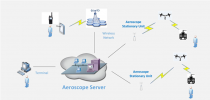On another thread I posted about a person complaining that 2 drones were hovering over her yard while family was in the jacuzzi, she refined her statement saying it was proablaby 8-12' above them. Definitely a no no.
My questions is, with Remote ID in newer drones, can FAA go through logs and find the drone and locational violation? Then perhaps the owner if they registered it as required? Or is Remote ID info only readable during operation?
Hope I worded this to make sense.
My questions is, with Remote ID in newer drones, can FAA go through logs and find the drone and locational violation? Then perhaps the owner if they registered it as required? Or is Remote ID info only readable during operation?
Hope I worded this to make sense.














